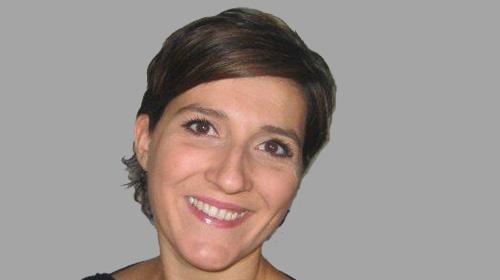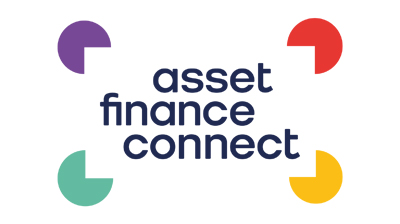This year, participants will be tasked with developing an original idea (be it in terms of value proposition, products, processes, channels, etc.) that will “address or solve the challenge posed by an external, disruptive factor”.
This could be either by making the most of it, if it is a positive trend, or if it is a challenge, turning this potential issue into an opportunity. Participants will also have to explain how this innovative idea will impact the growth and profitability of their leasing business.
When looking to the future of their industry in the post-recessionary environment, European asset lenders and lessors have remained clear about two things:
• firstly, people are the industry’s most important asset: and
• secondly, the industry needs to foster a culture of innovation if it is to thrive in an environment of low economic growth and ever increasing regulation.
Jacqueline Mills director of asset finance & research at Leaseurope explained: “Simply talking about people and innovation is, however, not enough. If the industry wants to achieve real change through innovation, concrete action is needed. Specifically, we need to identify and trust in a new generation of European lessors and give these young talents the opportunity to develop and express their views freely.”
It is with precisely this in mind that Leaseurope decided to launch its first Future Group in 2013.
Given a mission
Sixteen young lessors from a variety of functions and backgrounds were nominated by their CEOs to take part in the 2013 Future Group. Each member of the Group was given the mission of coming up with an innovative idea. The idea could relate to any area of the business (be it products, processes, people, business models, etc.), as long as a case could be made that it would generate sustained profitability.
Mills added: “These ideas were discussed and analysed for their development potential by the Group, together with Leaseurope and our Associate Member, specialised asset finance consultancy, Invigors. The ones with the most development potential were then selected from the pool and were further developed by Future Group members working in teams. The resulting top three innovation projects were presented to the industry in a special session at the Annual Convention of the European Leasing Industry in Rome.”
The individual ideas presented by the previous young lessors were discussed and developed in a series of meetings in 2013 at the European House of Leasing in Brussels. Once each Future Group member had pitched his or her idea to the Group, Leaseurope and Invigors selected the most promising concepts, taking into account the results of a Group vote.
The three ideas selected were:
Ecoreward Project

Paul Stirn
• the Ecoreward Project by Paul Stirn, which was further developed in his team with Alberto Petroni, Marcin Podwojski, Airlie Smith and Juho Väinölä;
Paul Stirn, International Partnerships Manager at ALD International, explained: “We know it to be a fact that a driver’s behaviour has a major impact on vehicle fuel consumption.
“Ecoreward therefore aims to decrease vehicle fuel consumption through the improvement of the driver’s behaviour. Additionally, it is also aimed at the corporate fleet customer, providing them with various incentives and a lower total cost of ownership. It will also promote the use of telematics, improve the penetration of low-emissions vehicles and improve customer loyalty to the leasing company.”
This double incentive scheme would operate as follows:
Corporate customer incentive: If the corporate customer manages to maintain its fleet consumption underneath a certain threshold (which is defined as the official manufacturer’s fuel consumption figure + 28%), the customer receives the free installation of a vehicle telematics unit on leases that it renews with the lessor.
If the corporate customer manages to maintain its fleet consumption below another, even lower threshold (defined as 20% over the official manufacturer’s fuel consumption figure), in addition to the telematics unit on a renewal, the customer gets 1 free monthly-rental on the renewal if it chooses an A CO2 – class vehicle (i.e. a car from the lowest CO2 emissions bracket).
Driver incentive: The goal of Ecoreward is to define a fuel consumption threshold for each driver and to reward their efforts when they reach the target objective. This can be tracked through telematics systems. The driver receives the cash equivalent (or benefit in kind) to half of the amount of saved fuel below the defined threshold. For instance, if the telematics system reports the equivalent of 130 litres of fuel saved during a 3-month period, which represents approximately €200, the driver will receive an incentive equal to the value of €100.
Stirn stressed: “The incentive is wholly financed by the corporate customer, which maintains both the margin and the competitiveness of the leasing product. The incentive scheme chosen depends on local taxation and could be given as a gift voucher instead of cash.”
He added: “This is a win-win situation: the driver is only rewarded if fuel consumption is reduced, which results in an overall saving for the corporate client.”
Community and subscription-based model for usage of equipment

Etelvina Saavedra
• creating a Community and Subscription Based Model for Usage of Equipment by Etelvina Saavedra, which was further developed in her team with Brigitte Rebhan, Hywel Prewett, Luca Samorì, Marco Ripamonti and Michał Męclewski;
Companies can often face difficulties purchasing or leasing assets, especially in the small and medium enterprise segment (SMEs). Moreover, SMEs only need assets for a limited period of time (e.g. to carry out an order or a specific project) and can struggle to manage the various aspects associated with owning and running assets (such as fuel, maintenance and repairs, insurance, etc.).
In addition to this, SMEs can be relatively isolated and could benefit from belonging to a community of likeminded professionals who experience similar business issues.
Etelvina Saavedra, International Vendor Program Manager at Societe Generale Equipment Finance, explained: “We want to offer a flexible solution so that these SME-companies can: share an asset, use an asset on a need-to-have basis, and pay accordingly.
“The solution proposed allows for short-term, flexible three, six or nine+ month leasing contracts of second life industrial or construction equipment.
“Clients are SMEs (with a focus on those with less than 50 employees) in the construction and industrial sectors. The client will pay only for its specific use of the asset and assets are shared amongst other members of the user community. In this way, a pool of second-hand assets available for use is formed.”
To be able to access the community and its flexible, pay-per-use leasing solutions, the client pays a subscription fee (referred to as the “leasing pass”). The pay-per-use price also includes relevant asset services that the customer can select from a menu according to its specific needs to form a tailored package. Clients also have the benefit of accessing the asset together with the packaged service solutions through a single point of contact (i.e. the leasing company).
Saavedra added: “In addition to the benefits of the leasing product, the client becomes part of an on-line community of SME asset users, where like-minded people in the same business can share asset-related information and exchange best practices.
“In addition to the client benefits set out above, this solution would also clearly be beneficial for lessors. Lessors would be able to attract clients who can currently not afford to buy an asset outright or who are not in a position to obtain a standard leasing contract. The solution would also create client loyalty thanks to the lessor’s proximity to its client’s business.”
Leasing and P2P

Vincent Romanelli
• leasing and P2P: The leasing industry needs to leverage off the development of Peer 2 Peer funding now targeted at SMEs by Vincent Romanelli, which was further developed in his team with Gernot Prettenthaler, Kari Mäkelä, Helga Laureys, Frits Engelaer.
The narrative is a familiar one. Banks aren’t lending to cash starved businesses desperate for funding.
In the UK, for instance, the government’s Breedon review of 2012 estimated demand for new funding by all businesses exceeded supply by between £84bn and £191bn. Bank lending is further constrained by ever tightening capital standards under Basel III, while leasing subsidiaries of banks have their own specific challenges as business units in competition for scarce group resources, with funding constraints impacting on their ability to grow.
Leaseurope’s Annual Statistical Survey of 2012 showed that total new leasing volumes had contracted by 2.6% to reach €252.6 billion. Yet, at the same time, there has been a discernible increase in peer to peer (P2P) funding, at first targeted at individuals, but increasingly now towards SMEs. P2P market entrants provide the benefit of “cutting out the middle man” (generally banks) by offering an online platform connecting businesses looking for funding, with investors looking for an enhanced return compared to other asset classes where yields are currently low.
Vincent Romanelli, Information Development Manager at Investec Asset Finance Group, explained: “Faced with the new P2P market entrants, my innovative idea is that the leasing industry is in a unique position to respond. On the one hand, we are viewed and bracketed as “alternative finance” providers, and yet we have established and trusted brands for SMEs and investors.
“The leasing industry has been providing finance to SMEs for many years, and more importantly has been able to sell leasing as a product solution; a solution that is particularly suited to small businesses and has been a major source of support for SMEs through the more difficult economic times. As such, I believe that the leasing industry has a unique proposition for potential P2P investors; we offer the opportunity to partner with an established and trusted market participant, in a particular national or international region, to gain exposure to the SME sector, with tangible asset backed security. Indeed, the volumes written by these existing P2P entities equate to just a couple of months of new business financed by established lessors.”
The suggested proposal is to take a portfolio of SME leases, underwritten as per established credit policies, executed and then aggregated into risk buckets, to present to investors as a package for funding via a structured fixed income investment product.
The lessor presents this to individual investors for funding via an online portal giving the required details of the constituent lessees and the “risk grade” assigned, although Romanelli stressed it is important to avoid going down the route of credit enhancements and large scale structuring associated with traditional securitisation.
He said: “With multiple lessees, there is a diversification benefit for investors, but at the same time a typical pool can be tailored to a particular client industry sector or asset class, with a focus on attracting retail investment and retaining the ‘personalised’ feel of the P2P platforms. Thus, this would be further differentiated from traditional securitisation.”
“For investors,” Romanelli said, “the process can be automated with a set % of funds being allocated, for instance, to any asset pool with vehicles financed, or any deal to the manufacturing sector, or any deal with a risk grade ‘A’ etc. However, investors are also allowed to view details and actively select which they want to invest in. All back office functions would continue to be managed by the lessor, with investors bearing the loss in the event of a client default. The lessor will retain ownership of the assets, but crucially will have access to new funding sources without the capital constraints.”




